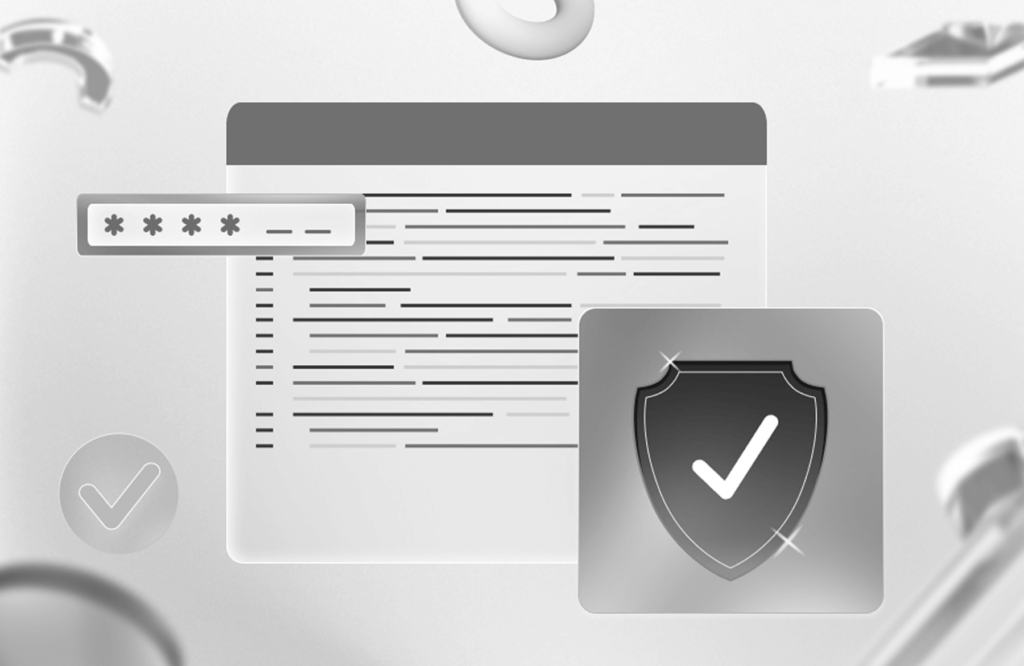Enhancing Cyber Security in Software Development


Digital technologies dominate our era, and cyber security in software development has become paramount. The pervasive integration of software into every aspect of our lives, from mobile applications to critical infrastructure systems, increases the importance of ensuring the security of software products. As software continues to evolve, so do the threats targeting it. This article dives into the significance of cyber security in software development, the security risks inherent in the development process, and strategies to enhance security throughout the software development life cycle.
Understanding cyber security and security risks in software development
Cyber security refers to the measures and practices implemented to protect software systems, applications, and data from cyber threats. It encompasses a broad range of activities aimed at safeguarding software assets against unauthorized access, data breaches, malware attacks, etc. Effective software security involves not only integrating security features into software products but also adopting secure coding practices, rigorous testing, and ongoing security monitoring and updates. Software development presents numerous security concerns that can compromise the integrity, confidentiality, and availability of software systems.
- One of the primary risks is the presence of vulnerabilities in the code, which malicious actors can exploit to gain unauthorized access or execute malicious actions. Common vulnerabilities include buffer overflows, injection attacks, authentication flaws, and insecure data storage practices.
- The interconnected nature of modern software ecosystems introduces additional risks, such as third-party dependencies and supply chain vulnerabilities. Integrating third-party libraries or components without proper vetting can introduce security weaknesses into the software stack, making it susceptible to exploitation.
- Inadequate security controls during the development process, such as weak encryption algorithms or improper access controls, can also leave software systems vulnerable to attacks.
Cyber security in the software development life cycle
In order to effectively mitigate security risks and ensure the safety of a product, cyber security should be integrated into every phase of the software development life cycle (SDLC). Effective collaboration between software engineers and cybersecurity professionals is a must to achieve this goal. This includes conducting security requirements analysis, threat modeling, secure design and architecture, secure coding, security testing, and security operations. By incorporating security into the software engineering process from the outset, organizations can minimize risks and build trust with their users. Below, we will briefly describe cyber security and software engineering tasks during different stages of the SDLC and the specialists involved throughout the process. They collaborate closely with the software developers to ensure that software applications are developed, deployed, and maintained securely throughout their lifecycle.
Requirements analysis
Identifying security requirements and defining security objectives should take place early in the SDLC to ensure that security considerations are incorporated into the design and development of software systems.
Design and architecture
Designing secure software architectures and implementing security controls at the design stage helps mitigate security risks and ensures that security is built into the software from the ground up. Security architects are responsible for developing and implementing the overall security architecture of an application or system. They assess security risks, determine security requirements, and design security controls to mitigate threats.
Implementation
Adhering to secure coding practices and conducting code reviews and security testing during the implementation phase helps identify and remediate security vulnerabilities in software code. Security engineers focus on implementing and maintaining security controls within software systems. They work closely with developers to integrate security features into applications, conduct security assessments, and respond to security incidents. DevSecOps (development, security, operations) engineers bridge the gap between development, operations, and security teams by integrating security into the DevOps pipeline. They automate security testing, build security into deployment processes, and promote a culture of security throughout the development lifecycle.
Testing and QA
Conducting thorough security testing, including vulnerability scanning, penetration testing, and security code reviews, helps validate the effectiveness of security controls and identify any security weaknesses in the software product. Penetration testers, also known as ethical hackers, simulate cyber attacks to identify vulnerabilities in software systems. They conduct security assessments, perform penetration tests, and provide recommendations for improving security posture. QA engineers are responsible for testing software applications to ensure they meet quality and security standards. They conduct security testing, including vulnerability assessments and penetration testing, to identify and remediate security issues. [blog-subscribe]
Deployment and operations
Implementing secure deployment practices and configuring security controls, such as access controls, encryption, and logging, helps ensure that software systems are secure and resilient to cyber threats in production environments. Security analysts monitor and analyze security events and incidents to identify threats and vulnerabilities. They investigate security breaches, analyze security logs, and provide recommendations for enhancing security controls. In larger organizations, the CISO (Chief Information Security Officer) oversees the organization’s overall cybersecurity strategy and governance. They develop security policies, manage security resources, and provide leadership on cybersecurity matters.
Cyber security best practices and why they are important
Following cybersecurity best practices is required for many reasons. Below are some of them.
Preventing financial loss
Cyber attacks can result in significant financial losses for organizations, including costs associated with data breaches, system downtime, legal fees, and regulatory fines. Implementing best practices can help mitigate these risks and minimize financial impact.
Preserving reputation
A cybersecurity breach can damage an organization’s reputation and erode trust among customers, partners, and stakeholders. By following best practices and demonstrating a commitment to security, organizations can maintain their reputation and credibility in the eyes of the public.
Following compliance requirements and mitigating legal risks
Many industries are subject to regulatory requirements and compliance standards governing data security and privacy. Adhering to cybersecurity best practices helps organizations meet these obligations and avoid penalties for non-compliance. In addition to financial penalties for non-compliance, organizations may face legal liabilities and lawsuits resulting from cybersecurity breaches. Implementing best practices can help mitigate these risks and protect organizations from legal consequences.
Ensuring business continuity
Cyber attacks can disrupt business operations, leading to downtime, loss of productivity, and missed opportunities. By implementing robust cybersecurity measures, organizations can minimize the impact of attacks and ensure the continuity of their business operations.
Protecting Intellectual Property
Intellectual property (IP) theft can have serious consequences for organizations, including loss of competitive advantage and revenue. Following best practices in cybersecurity helps safeguard valuable IP assets from theft or compromise. Let’s now look at the most common best practices in cyber security.
Secure coding standards
Secure coding practices include but are not limited to input validation, output encoding, and parameterized queries. These practices and guidelines are developed to enable software development security in cyber security and write code that is resistant to common vulnerabilities such as SQL injection (a web security vulnerability that allows an attacker to interfere with the queries that an application makes to its database), cross-site scripting (manipulating a web site so that it returns malicious JavaScript to users), and buffer overflows and provided by OWASP (Open Web Application Security Project) or CERT (Computer Emergency Response Team). Developers should be trained to write secure code and follow the standards established there.
Secure authentication
Robust authentication and authorization mechanisms are required to control access to sensitive resources within software applications and avoid unauthorized access and data breaches. Strong authentication mechanisms, such as multi-factor authentication (MFA) and biometric authentication, add an extra layer of security beyond traditional username and password combinations. Additionally, passwords should be hashed and salted to protect them from being compromised in the event of a data breach. Data protection strategies Protecting data includes protecting personal information, financial data, intellectual property, and other valuable assets from cyber threats. Encryption, hashing, and secure data transmission protocols are the most common components of effective data protection strategies. Encryption includes encrypting data both at rest (stored on disk or in databases) and in transit (as it travels over networks). Strong encryption algorithms, such as AES (Advanced Encryption Standard), should be used to safeguard data.
Least privilege principle
The principle of least privilege dictates that users and components should only be granted the minimum level of access necessary to perform their tasks. This reduces the potential impact of a security breach by limiting the scope of access an attacker can gain upon compromising a system.
Security testing
Security testing is necessary to identify and address vulnerabilities early on. Techniques such as penetration testing, where ethical hackers attempt to exploit weaknesses in a system, and code reviews, where developers examine each other’s code for security flaws, can help uncover and remediate vulnerabilities before they can be exploited by malicious actors.
Secure configuration management
Properly configuring servers, databases, and other components includes disabling unnecessary services, applying security patches, and following industry best practices for securing network infrastructure.
Incident response plan
Despite best efforts to prevent security incidents, they can still occur. Having a well-defined incident response plan in place helps organizations respond to security breaches in a timely and effective manner. This plan should outline procedures for detecting, containing, and mitigating security incidents, as well as communicating with stakeholders and authorities as necessary.
Security awareness training
Educating developers, employees, and other stakeholders about common security threats and best practices is essential for fostering a security-conscious culture within an organization. Regular training sessions and awareness campaigns can help ensure that individuals are equipped to recognize and respond to security risks appropriately.
Vulnerability management, incl. regular updates and patch management
Regularly scanning software systems for vulnerabilities is crucial for addressing security weaknesses and reducing the risk of exploitation. Software vendors release patches and updates to fix security vulnerabilities discovered in their products. It’s important for organizations to promptly apply these updates to ensure that their software remains secure. Automated patch management systems can streamline this process and help mitigate the risk of exploitation. Vulnerability management processes should be integrated into the software development life cycle to ensure proactive risk mitigation. Enhancing cyber security in software development is essential for protecting against evolving cyber threats. By integrating security into every phase of the software development life cycle and adopting secure development practices, you can minimize security risks and build trust with users of your product. Cyber security is not just a technical challenge; it is a fundamental aspect of responsible software development. It requires collaboration, vigilance, and ongoing commitment to excellence.


